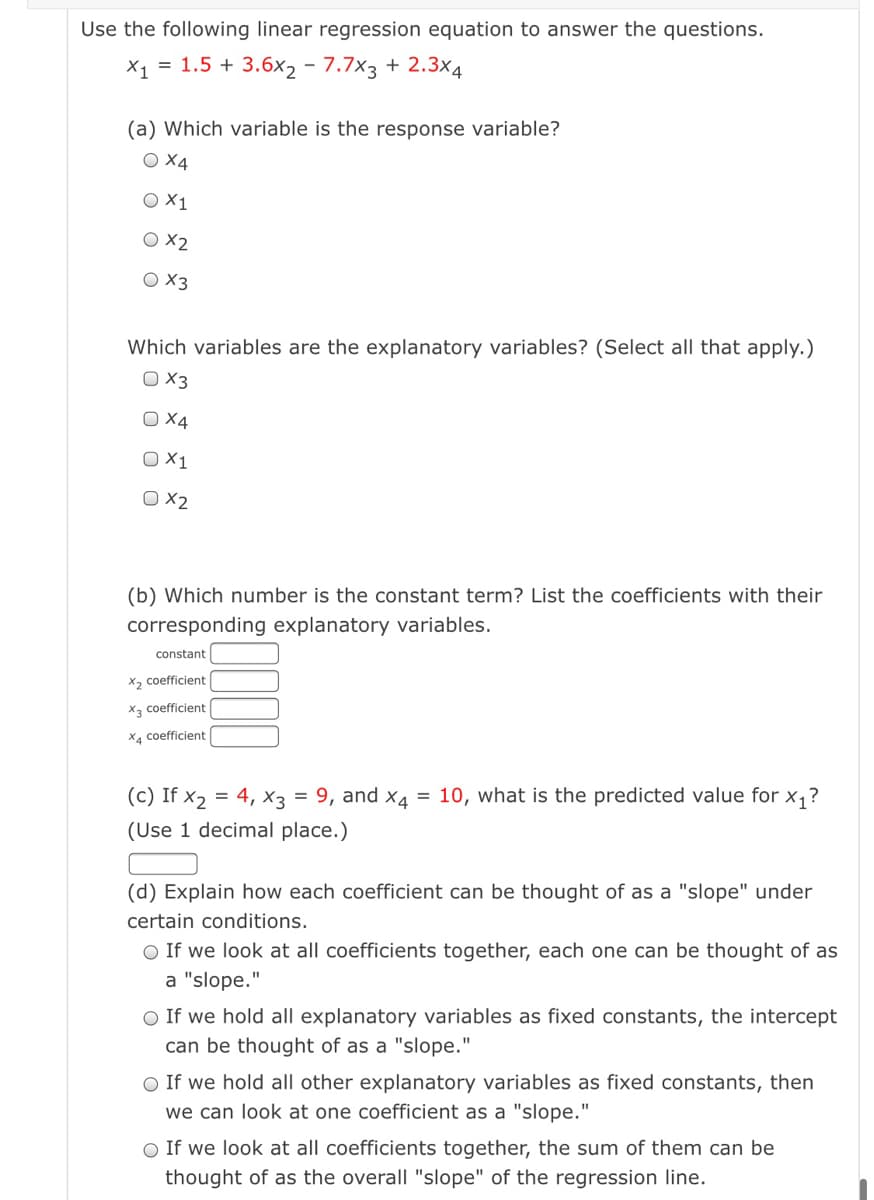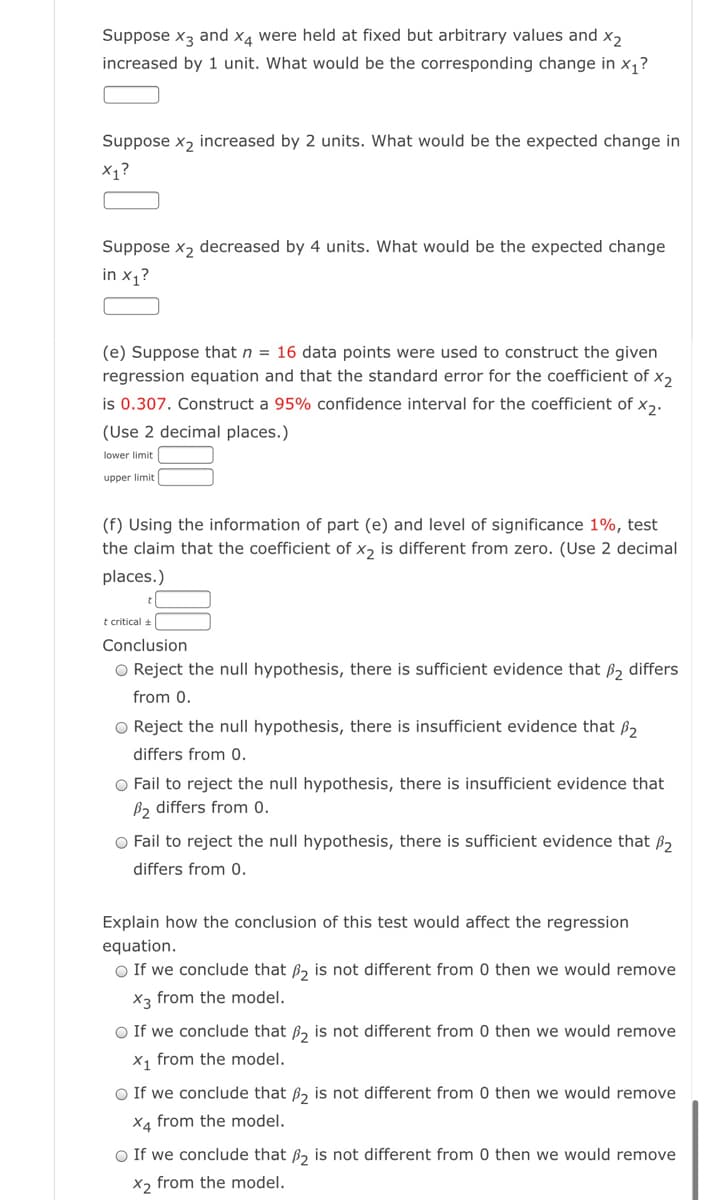(a) Which variable is the respon O X1 O X2 X3
Functions and Change: A Modeling Approach to College Algebra (MindTap Course List)
6th Edition
ISBN:9781337111348
Author:Bruce Crauder, Benny Evans, Alan Noell
Publisher:Bruce Crauder, Benny Evans, Alan Noell
Chapter5: A Survey Of Other Common Functions
Section5.6: Higher-degree Polynomials And Rational Functions
Problem 1TU: The following fictitious table shows kryptonite price, in dollar per gram, t years after 2006. t=...
Related questions
Question

Transcribed Image Text:Use the following linear regression equation to answer the questions.
X1 = 1.5 + 3.6x2 - 7.7x3 + 2.3x4
(a) Which variable is the response variable?
O X4
O X2
O 3
Which variables are the explanatory variables? (Select all that apply.)
O 3
O X4
O X1
O ×2
(b) Which number is the constant term? List the coefficients with their
corresponding explanatory variables.
constant
X2 coefficient
X, coefficient
X4 coefficient
(c) If x2 = 4, x3 = 9, and x4 = 10, what is the predicted value for x,?
(Use 1 decimal place.)
(d) Explain how each coefficient can be thought of as a "slope" under
certain conditions.
O If we look at all coefficients together, each one can be thought of as
a "slope."
O If we hold all explanatory variables as fixed constants, the intercept
can be thought of as a "slope."
O If we hold all other explanatory variables as fixed constants, then
we can look at one coefficient as a "slope."
O If we look at all coefficients together, the sum of them can be
thought of as the overall "slope" of the regression line.

Transcribed Image Text:Suppose x3 and x4 were held at fixed but arbitrary values and x,
increased by 1 unit. What would be the corresponding change in x,?
Suppose x, increased by 2 units. What would be the expected change in
X1?
Suppose x, decreased by 4 units. What would be the expected change
in x1?
(e) Suppose that n = 16 data points were used to construct the given
regression equation and that the standard error for the coefficient of x,
is 0.307. Construct a 95% confidence interval for the coefficient of x,.
(Use 2 decimal places.)
lower limit
upper limit
(f) Using the information of part (e) and level of significance 1%, test
the claim that the coefficient of xɔ is different from zero. (Use 2 decimal
places.)
t critical +
Conclusion
O Reject the null hypothesis, there is sufficient evidence that ß, differs
from 0.
O Reject the null hypothesis, there is insufficient evidence that ß,
differs from 0.
O Fail to reject the null hypothesis, there is insufficient evidence that
B2 differs from 0.
O Fail to reject the null hypothesis, there is sufficient evidence that ß,
differs from 0.
Explain how the conclusion of this test would affect the regression
equation.
O If we conclude that B, is not different from 0 then we would remove
X3 from the model.
O If we conclude that ß, is not different from 0 then we would remove
X1 from the model.
O If we conclude that ß, is not different from 0 then we would remove
X4 from the model.
O If we conclude that B, is not different from 0 then we would remove
X2 from the model.
Expert Solution
Working
Note: Since you have posted a question with multiple sub-parts, we will solve the first three subparts for you. To get the remaining sub-part solved please repost the complete question and mention the sub-parts to be solved.
Regression line
x1 = 1.5 + 3.6x2 -7.7x3 + 2.3x4
a)
Response variable = x1
Explanatory variables = x2,x3,x4
Step by step
Solved in 2 steps

Knowledge Booster
Learn more about
Need a deep-dive on the concept behind this application? Look no further. Learn more about this topic, statistics and related others by exploring similar questions and additional content below.Recommended textbooks for you

Functions and Change: A Modeling Approach to Coll…
Algebra
ISBN:
9781337111348
Author:
Bruce Crauder, Benny Evans, Alan Noell
Publisher:
Cengage Learning


Functions and Change: A Modeling Approach to Coll…
Algebra
ISBN:
9781337111348
Author:
Bruce Crauder, Benny Evans, Alan Noell
Publisher:
Cengage Learning
